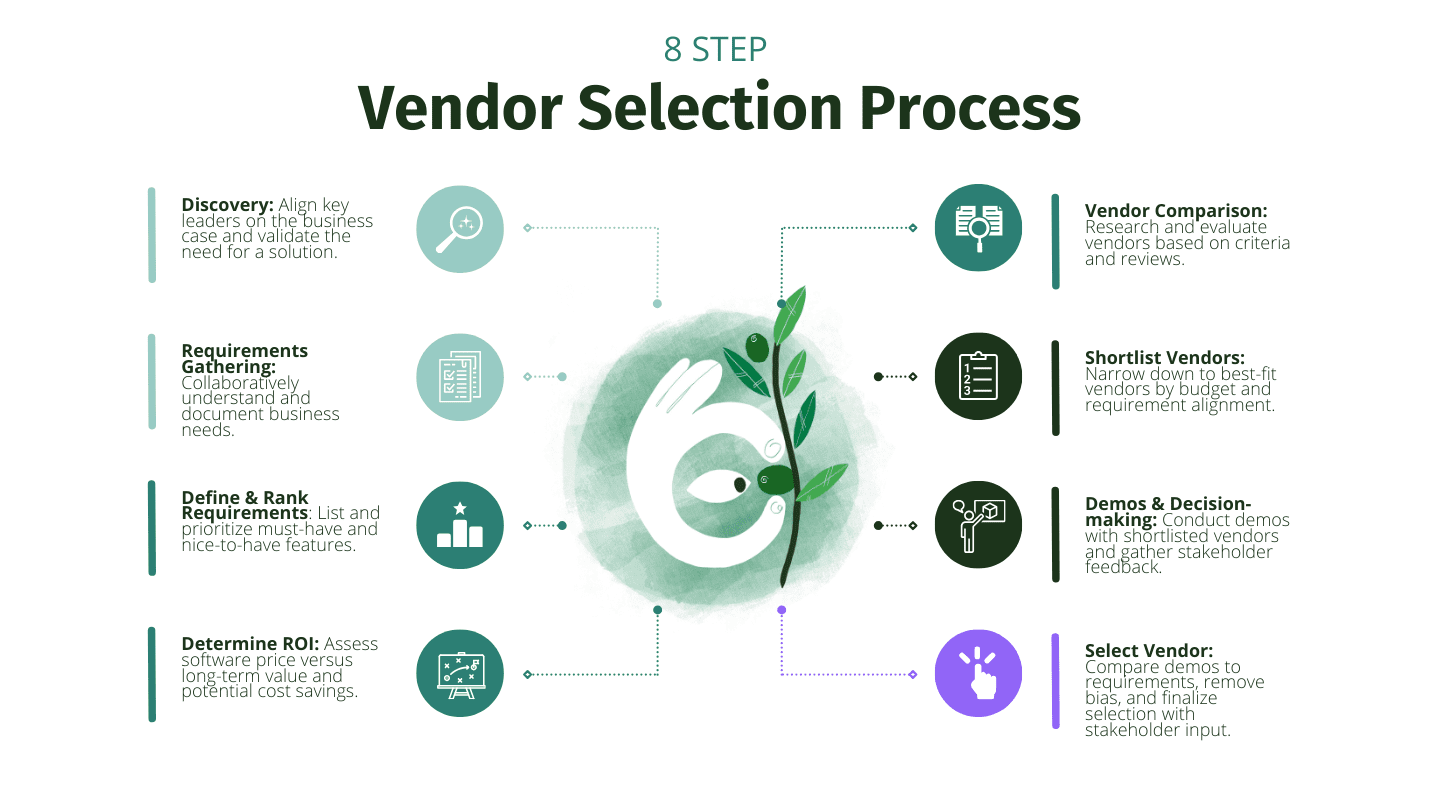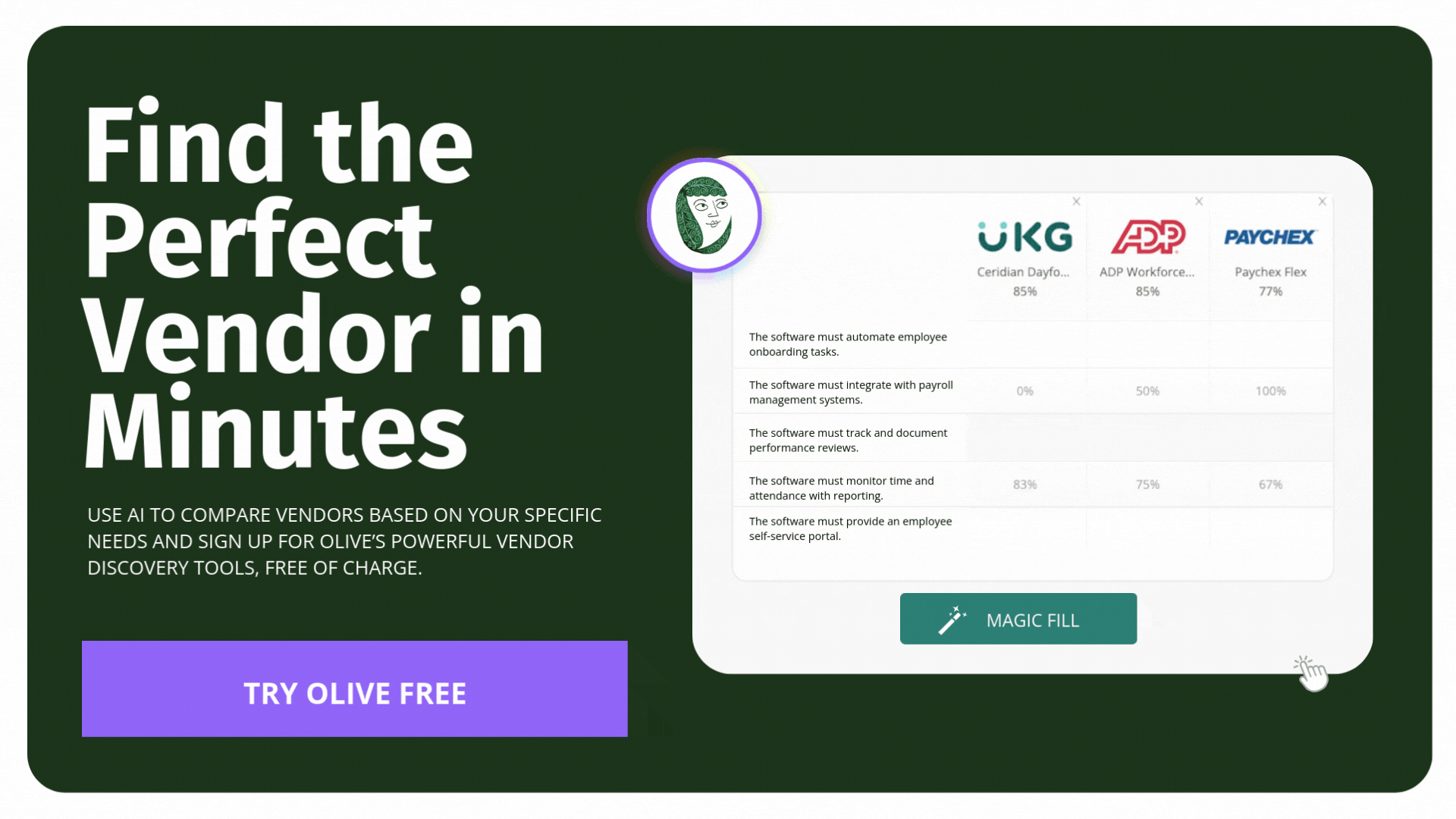Vendor Selection Criteria: 4 Essential Considerations
Selecting the right software vendor is crucial for successful digital transformation in any organization. However, the process of enterprise software vendor selection can be overwhelming, often involving numerous meetings, RFPs, and extensive documentation. In 2024, this process doesn’t have to be so challenging! By focusing on these four key considerations and understanding essential vendor selection criteria, you can streamline your vendor selection journey and find the best-fit software vendor with ease.
1. Follow a Comprehensive Enterprise Software Vendor Selection Process

A thorough vendor selection process is essential for identifying the best solution that meets your organization’s specific business needs. Skipping or shortcutting this process can lead to significant risks, including lack of user buy-in and poor adoption rates post-implementation. To ensure success, follow these steps:
- Discovery: Understand the business case for the required solution.
- Requirements Gathering: Identify the needs of the business.
- Ranking Requirements: Collaborate with key stakeholders to define and prioritize the requirements.
- Cost Analysis: Calculate the ROI of potential solutions.
- Vendor Scoring: Compare vendors against the defined requirements.
- Shortlisting: Narrow down the best-fit solution vendors.
- Demoing: Evaluate the shortlisted vendors through demonstrations.
By adhering to this structured process, you can mitigate risks and ensure that the selected software aligns perfectly with your organizational goals.
2. Diligently Gather and Rank the Vendor Selection Criteria (Requirements)
Managing requirements for software vendor selection is often complex and time-consuming. Vendor selection criteria are essentially the requirements that need to be met by potential vendors. Documents like RFPs and RFIs can be lengthy and frequently updated, which may lead to stakeholder fatigue. To streamline this process, it’s crucial to:
- Functional Requirements: Ensure the software meets the essential capabilities and integration needs.
- Cost and ROI: Evaluate the total cost of ownership and potential return on investment.
- Vendor Reputation and Stability: Assess the vendor’s market standing, financial health, and industry experience.
- Support and Maintenance: Consider the availability and quality of customer support and maintenance services.
- Compliance and Security: Ensure the vendor meets regulatory requirements and has robust security measures.
- Scalability and Flexibility: Check if the solution can grow and adapt with your business needs.
- Innovation and Future-Proofing: Look at the vendor’s product roadmap and commitment to innovation.
- User Experience: Evaluate the ease of use, training availability, and user feedback mechanisms.
- Implementation and Deployment: Consider the time and support required for deployment and change management.
- Vendor Location and Accessibility: Assess the geographical proximity and accessibility of the vendor, particularly if security concerns are a factor.
Using tools that automate the gathering and management of these requirements can significantly reduce the workload and ensure that the criteria are precise and aligned with business needs.
3. Don’t Neglect Organizational Buy-In and Change Management
Digital transformation often involves significant changes that can be challenging for organizations. Increasing user adoption can start at the very beginning of the vendor selection process by ensuring that the right stakeholders are included from the outset. Effective change management is critical to ensuring high user adoption and successful implementation. Key strategies include:
- Communication: Clearly articulate the digital transformation goals to all stakeholders. Transparency in communication helps to build trust and understanding of the project’s vision and benefits.
- Engagement: Involve leaders, stakeholders, and employees early and often in the process. This inclusive approach ensures that everyone feels a part of the transformation journey, which can significantly boost buy-in and support.
- Change Management Strategy: Develop a comprehensive strategy to manage the transition and encourage buy-in. A well-structured change management plan can address potential resistance and provide a clear roadmap for smooth implementation.
With Olive, you can enhance collaboration and engagement across the organization, ensuring that all voices are heard and the team is aligned with the project vision. Olive’s platform facilitates effective communication, stakeholder engagement, and robust change management, making the digital transformation process smoother and more successful.
4. Use AI and Automation to Streamline the Software Vendor Selection Process
Using Olive can help consultants and organizations select the best vendor for the organization’s selection criteria without compromising on thoroughness. Olive enables efficient collaboration with key stakeholders to develop and manage requirements, compare vendors, and shortlist the best-fit solutions for demonstration.
Key benefits include:
- Enhanced Collaboration: Streamline stakeholder collaboration to identify and rank requirements.
- Vendor Comparison: Evaluate software vendors anonymously within the context of business needs.
- Requirements Libraries: Access similar project requirements for reference.
- Stakeholder Feedback: Gather feedback through surveys to refine vendor selection.
- Efficient Filtering: Filter out vendors that do not meet business needs, ensuring a perfect match.
By automating the vendor selection process with Olive, you can focus on finding the right solution quickly and efficiently, leading to successful digital transformation.
Implement these four key considerations to ensure a seamless and effective software vendor selection process, positioning your organization for success in 2024 and beyond!






